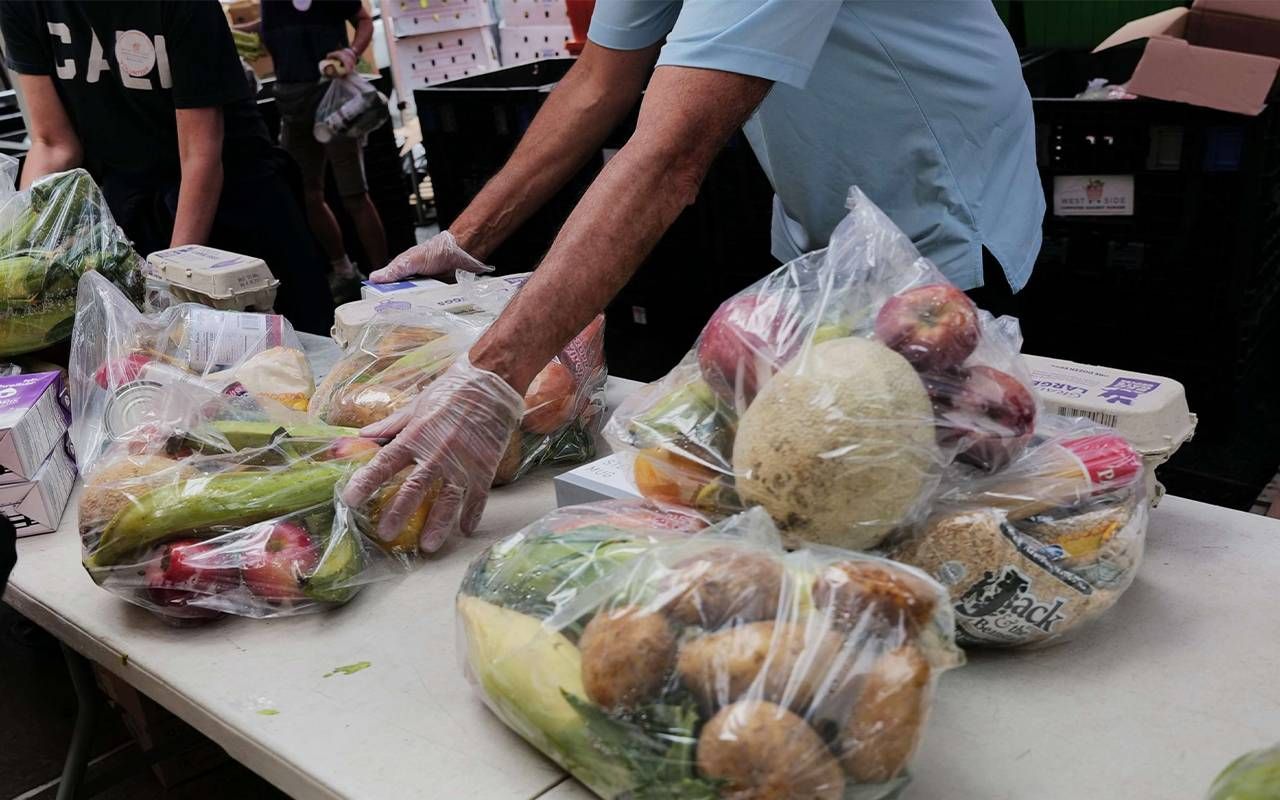Millions of Older Adults Needlessly Live in Poverty
Aid programs could erase a recent spike in the number of poor people, but complicated rules and the lack of promotion baffle potential applicants
If you happened to hear a recent report stating that a growing number of older Americans are living in poverty — it's likely you were so infuriated and appalled that you immediately called your local representatives, gathered your family, wept and vowed to be part of the change.
No?
You might want to.

According to the latest data from the U.S. Census Bureau, 14.1% of adults aged 65 and older lived in poverty, as defined by the Supplemental Poverty Measure, compared with 9.5% in 2020. That's about a 50% jump in just three years, meaning roughly 8 million older adults now live in poverty. (For context, that's roughly the population of New York City.)
Yes, inflation has had an impact, along with the jobs lost in the pandemic and the recent rollback of benefits that had been expanded during Covid. But underneath those factors are some bigger, more baffling issues that are standing in the way of low-income older adults getting access to benefits they need.
In a nutshell, there are resources available to help millions of older people avoid poverty. But millions of people can't access those benefits.
What's going on?
#1: $30 Billion in Unclaimed Benefits
It almost sounds too far-fetched to be true. But according to research by the National Council on Aging (NCOA) millions of adults aged 65 and older struggle to pay for basic living expenses because . . . they aren't enrolled in programs they actually qualify for.
The result, NCOA has found, is that millions of people are not able to take advantage of some $30 billion a year in benefits that could help them cover the cost of food, utilities, medical care, prescriptions and more.
The two main hurdles, says Howard Bedlin, government relations and advocacy principal with NCOA, could be summed up as PR and Paperwork. "Many older adults just aren't aware of certain low-income protection programs — or they struggle with the application forms or language access," he says. "As a result, a big chunk of these benefits go unclaimed every year."
A Breakdown of Lost Benefits
To be clear, $30 billion isn't just a big chunk: It's a staggering amount. NCOA arrived at the figure by multiplying the estimated annual value of each benefit by the number of older adults who would qualify for that program, but are not enrolled. Here is a partial list of underclaimed benefits, for context:
- SNAP — Supplemental Nutrition Assistance Program helps low-income Americans buy food and groceries. But nearly half of eligible older adults — about 5 million people — aren't enrolled in the program. That's about $6.3 billion left on the table each year.
- Extra Help — The so-called Extra Help program, also known as the Medicare Part D Low Income Subsidy, helps older adults cover out-of-pocket costs for prescriptions. Yet some 2 million people who qualify for the program aren't enrolled. That's another $10.6 billion unclaimed annually.
- Medicare Savings Programs — MSPs can help older adults cover other out-of-pocket health care costs, like premiums, deductibles and co-payments. But as many as 2 million to 3 million people who might qualify haven't accessed MSPs, forfeiting $3.96 billion to $5.94 billion per year in benefits.
We're not at $30 billion yet, but NCOA's research finds the pattern repeats itself with other programs as well: benefits that help pay for utilities (including heating/cooling, phone and internet) as well as taxes and more.
How do you connect more people to more of these benefits?
#2: Permanent Funding for Outreach and Enrollment
When the National Council on Aging conducted a survey of older Americans in 2016 to find out why so many people weren't enrolling in income-protection programs, the four main factors were:
- Lack of awareness of certain programs.
- Not knowing how or where to apply.
- Concerns about the application process being too complicated.
- Believing other people needed the help more.
In other words, people urgently need more information about the benefits they qualify for — and the application process needs to be streamlined and simplified. That's why advocates like Bedlin hope Congress will expand funding for the Medicare Improvements for Patients and Providers Act — known as MIPPA.
"The community-based organizations that do this outreach have a hard time holding on to the staff that do this work because of lack of job security."
In 2008, Congress provided funding under MIPPA for outreach and enrollment efforts to low-income people on Medicare. How does it help older adults stay out of poverty? It's complicated, and you don't want to know all the acronyms, but essentially $50 million a year in MIPPA funds trickle down through state and local community organizations that help low-income Medicare beneficiaries enroll in programs like prescription drug Extra Help and Medicare Savings Programs that make Medicare more affordable.
Also, MIPPA funds helped establish NCOA's free tool, BenefitsCheckUp, which can tell older adults which programs they qualify for. (The service also is available by phone at 1-800-794-6559.)
Though MIPPA's current allocation of $50 million seems barely adequate to the task of educating millions of older Americans about Medicare, even a small expansion and making the funding permanent could make a substantial difference to the 85 benefits enrollment centers nationwide.
"The community-based organizations that do this outreach have a hard time holding on to the staff that do this work because of lack of job security," Bedlin says. Keeping experienced employees is crucial, he adds, because the issues are so complex.
Bedlin is optimistic that Congress could expand funding for MIPPA efforts by the end of the year. "The program has been historically bipartisan and non-controversial." But given the state of things in Congress, the outcome remains to be seen.
#3: Outdated Eligibility Rules for SSI Benefits
Another factor that has contributed to ongoing poverty among older, disabled and other vulnerable Americans is equally logic-defying. Except in this case, instead of eligible older adults not accessing benefits they're entitled to, the Supplemental Security Income (SSI) program is effectively disqualifying people who warrant this support, according to Rebecca Vallas, a senior fellow at The Century Foundation.
"The SSI asset limit has been stuck at $2,000 for individuals and $3,000 for couples since Congress last adjusted these amounts for inflation in 1984."
SSI was signed into law in 1972, ironically with the goal of insuring that low-income and disabled adults would never have to live in poverty. Now it's falling far short of that aim, owing to what Vallas describes as "one of SSI's most egregiously outdated rules" — a restrictive cap on savings and other assets that prevents otherwise qualified individuals from receiving SSI benefits.
"The SSI asset limit has been stuck at $2,000 for individuals and $3,000 for couples since Congress last adjusted these amounts for inflation in 1984," Vallas says. If those limits had been indexed to inflation when SSI was signed into law, she says, "they would be $10,840 and $16,260, respectively, today."
As it stands though, the SSI asset cap effectively punishes anyone who heeds financial planners' advice to set aside even a modicum of savings for emergencies or the future.
Some Promising Legislation
Fortunately, a new bill known as the SSI Savings Penalty Elimination Act was introduced to Congress in September, Vallas says. "It's the first bipartisan, bicameral legislation aimed at updating SSI's asset limits in nearly 40 years."
As such, the bill has convened a strange cross-section of interests that are rallying behind it, including social service providers, disability advocates, advocates for older adults, faith groups and corporate leaders (such as Microsoft and JP Morgan Chase).
While The SSI Savings Penalty Elimination Act is unlikely to be voted on as a standalone bill, Vallas says, lawmakers involved are hoping to move it forward by attaching it to another piece of legislation this year. Again, no guarantees.
A Reason to Keep Going
Taken together, these problems don't spell great news for low-income older adults in the short term. But the situation may not be as intractable as other challenges facing our country today (think: jobs replaced by A.I.).
At the very least, there are solutions that could lift many older adults out of poverty — or prevent them from falling into financial insecurity — that either exist now or will soon (we hope) get the funding they need to move forward.


